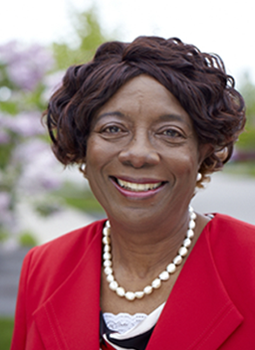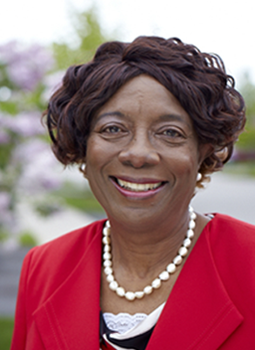This issue of the Journal includes coverage of RNAO’s 2019 Annual General Meeting (AGM) (page 19). The event was a resounding success and also marked my first full year as president. I was so impressed because, among 800 attendees, we had members, representatives from 37 non-nursing stakeholder organizations, and 11 politicians and public servants, including the health minister and opposition party leaders. It was evident RNAO is a collective force and is well-regarded in and outside of Ontario. We were thrilled to also receive congratulatory messages for our accomplishments from the International Council of Nurses and Sigma International.
This year’s theme – Speaking out for nursing. Speaking out for health – is RNAO’s mandate and symbolizes who we are and how we approach our responsibilities as health professionals. We recognize the knowledge and skills that RNs and NPs possess, and we use that expertise to inform the changes and solutions needed to benefit those in our care.
An important part of speaking out is speaking to the media about the nursing and health issues we believe will make our health system more responsive and patient-centred. RNAO’s ability to get its message out is impressive. Members are regularly featured in stories on radio, TV and in newspapers.
Media coverage of our stance on priority issues promotes awareness of who we are, builds momentum, and engages a broader audience about our work.
When RNAO leaders present before standing committees at Queen’s Park, or when the association has something important to announce, it often issues a media release to notify reporters. This is an effective strategy for advocating for healthy public policy. We also engage the media on special occasions such as Nursing Week, Take Your MPP To Work, Queen’s Park on the Road, our annual Fall Tour, and our AGM.
Media coverage of our stance on priority issues promotes awareness of who we are, builds momentum, and engages a broader audience about our work. RNAO has effectively used media to speak out on: hallway health care; health system transformation; the opioid epidemic and the need for supervised consumption sites; the need to hire more RNs; and the imperative need to stop replacing RNs with less qualified staff.
During the October board meeting and the February assembly meeting, members of RNAO’s communications team provided tips and tools to enhance interviewing skills by offering examples from previous interviews, and asking board and assembly members to analyze them and provide feedback. This was a meaningful and very enjoyable exercise. They also provided hands-on sessions on social media, another way we get our messages out.
One of the key points of these training sessions was to review RNAO’s media relations toolkit for important information to help prepare for radio or TV interviews, and practical tips on how to write a media release or a letter-to-the-editor. Staff in the communications department can also provide background information on issues, key messages, and coach you on preparing for an interview.
Some useful things to consider: write out your key points before the interview; present your key points at the beginning of the interview; don’t use nursing jargon or complicated terminology; describe a story or example from your practice (without disclosing patient names) to increase understanding of the topic; and keep it simple.
If you are the chair or president of your chapter, region or interest group, you may be called upon to give an interview on a particular topic or health/nursing issue in your community. If you have never given an interview, try rehear-
sing your points in advance. Commit those points to memory so you don’t have to read them during the interview. This will help you gain confidence and enhance your flow of thoughts, allowing for a more natural conversation with the media.
During RNAO’s annual Fall Tour earlier this year, I was asked to give several interviews (TV, radio and newspaper), which were arranged through home office. Since I’ve had previous experience, I did not use the media toolkit to prepare. Instead, I relied on RNAO’s policy backgrounders to refresh my knowledge on key issues, making me well-prepared for my interviews.
Success builds upon success. And the more you do an activity, the better you become. So, I encourage all members to get involved in giving interviews and writing letters-to-the-editor. You will be amazed how effective a communicator you can become.
Expect great things and great things will occur. The rest is up to you; knowing home office staff is at your side.


